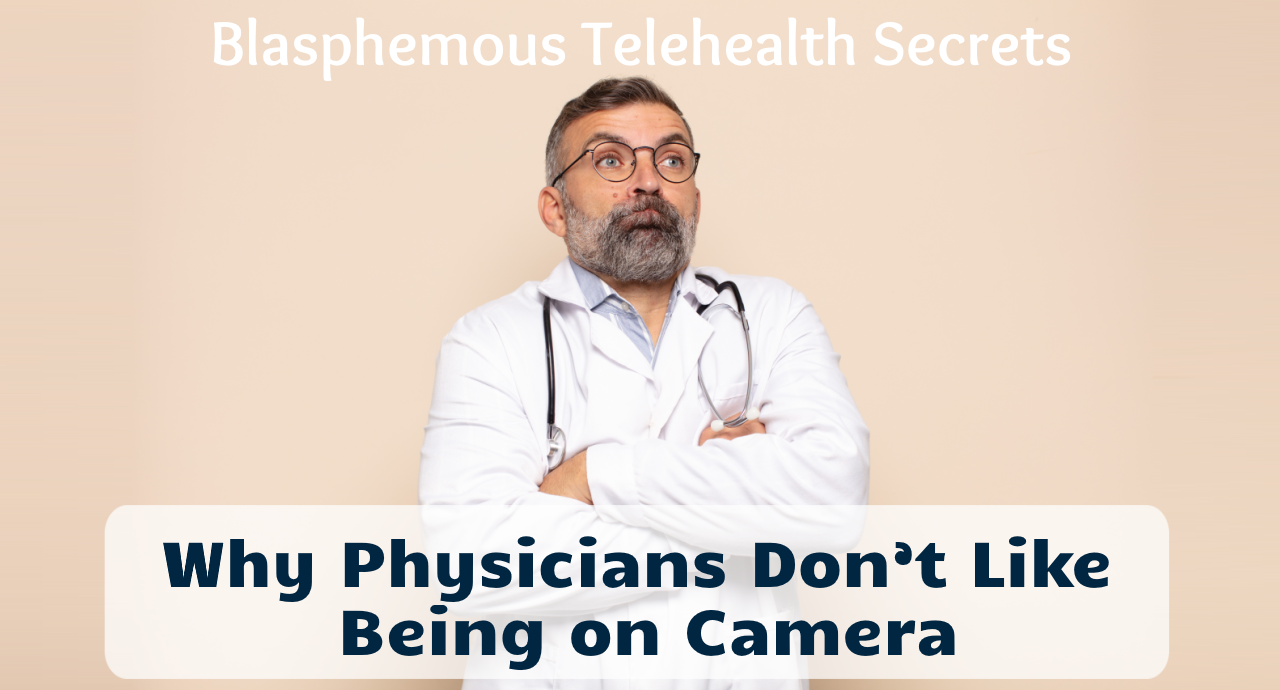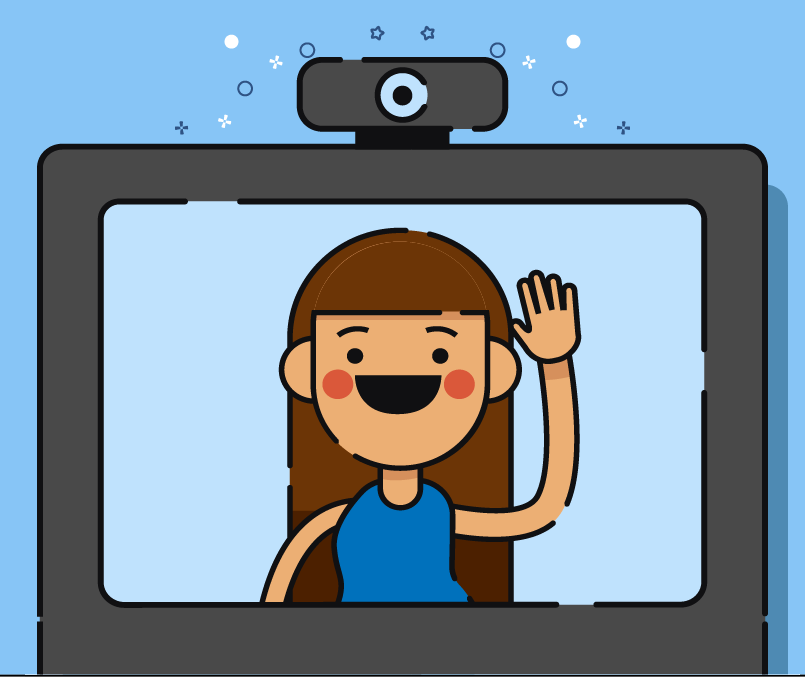All Great Truths begin as Blasphemies.
~George Bernard Shaw
Blasphemous Telehealth Secrets, Part 1
While the adoption of telehealth did skyrocket during the first months of the Covid-19 health crisis (as high as 90% in some health systems), most of it quickly reverted to “audio-only telemedicine” (or: phone calls, as we used to call them before Covid) and then quite quickly back to in-person visits. Though one report now touts an impressive-sounding 38x increase – i.e., from almost no use at 1 in 230 visits to now 1 in 6 visits, or 16-17%.
The Myth of the Unconnected Patient Who Does Not Like Telehealth
Over the past year, anecdotally, I’ve heard clinicians in both rural and urban areas declaring that either “patients don’t like telehealth” or that their patients did not have the right devices, or no reliable connectivity.
Yet, 85% of all Americans now have a smartphone (that’s 5 out of 6) and 97% have some sort of cell phone, though in the over 65 age group, those numbers drop to 61% and 92%. Access to 4G cellular connectivity is available to 96.3% to 97.7% of subscribers to AT&T, T-Mobile/Sprint, and Verizon and low-cost cell phone providers run their service over the backbones of the big players.
So while statistically speaking there are some challenges (and I get that not everyone is on an unlimited data plan), it is definitely not the majority of patients that are limited in their access to technology.
I think the underlying motivation behind those “self-fulfilling prophecies” lies somewhere else.
Do You Like Being on Camera?
Think back to March, April of 2020 before the onslaught of video meetings. How much did you like seeing yourself on video?
If you were quite new to the world of video conferencing, probably not so much. I have been using Zoom meetings since about 2014, first a few times a week, then a few times a day and now at least 8 times a day. But I still remember being quite particular about how I looked “on camera”.
As multiple Zoom-fatigue guides explain: Seeing your own video can be very stressful, as you are constantly evaluating what you look like and the recommendation is to turn off or hide your self-view as quickly and as often as possible.
I remember that for my first designs of telehealth services in rural clinics in the early 2010s, I made sure that the technology we were using at the time had the patient’s self-view disabled while the patient was waiting for the physician to join. I did not want patients to get distraught by having to stare at themselves which, unless you are a narcissist and naturally spend hours in front of a mirror, can make you feel very self conscious.
So yes, having to be on video can be very disorienting.
The View from the Physician Chair
Physicians, by their own understanding of their profession, must be in control. They strive to instill trust in patients by exuding confidence and sometimes have to make difficult decisions in split seconds.
Over the course of their education, their training and their career they become masters of intuition. As they arrive at their confidently stated orders, diagnosis or treatment, they consciously and subconsciously take into account at least a dozen of different inputs: the medical history, the latest test results, the previous visit notes, the family history, the gait of the patient, the speed and agility of the patient’s movement, their dress style, their smell, their choice of words, their emotions, etc.
Over years, they have acclimated themselves in carefully designed exam rooms or, for some, in physician offices that reflect their personality. That is their home turf, that is their playground, here is where they are royalty, reigning over and purposefully controlling the experience for the benefit of the patient.
Now, enter a webcam.
Suddenly, they are no longer in their own environment. A fish out of water. They are neither at the patient’s home nor in their own office. They are somewhere in between.
There is no smell, there is no touch, there is very little body language.
A warm, yet confident face-to-face presence is replaced with a cold, harsh video stream. Oftentimes with a connection that on the patient side is marred with connectivity problems, technical issues, bad lighting, distorted or muted audio, awkward camera angles and sometimes “TMI insights” into the patients’ home life.
So it’s no wonder that most physicians very much dislike having to care for patients using this modality. The old, proven, established ways of an in-person visit do no longer apply in the same way. Very few physicians have experienced house calls and are therefore not accustomed to the mindset of visiting patients at home.
Very few, even those who make good use of it, would prefer it over an in-person visit. Sure, telehealth beats “no visit” anytime, but when given the choice, many would prefer sticking to their comfort zone.
A Cure for Video Vertigo
Given that telehealth is something that many patients demand (and other, non-traditional care providers are happily providing), we have to figure out how we can assist physicians in getting the most value out of this modality of care delivery.
The answer is quite simple. For many years now, as part of a well-planned rollout of a new telehealth services I provide some 20-minute 1:1 training on what is now cutely referred to as “webside manners”.
There are a dozen or so simple, easy to learn, easy to remember, and easy to apply techniques that clinicians can be introduced to that vastly improve their experience being on video. A few months back I wrote a three-part series on Webside Manners providing more detail where you can read more about those techniques.
In March of 2020, at the onset of the Covid-19 health crisis, I was on the ground at an FQHC rolling out telehealth in 36 hours to 25 primary care clinicians across 5 sites. About 12 of the clinicians took me up on the offer to do a 1:1 training and those who did, reported a 4.3-4.5 satisfaction rating of their visits on a 5-point Likert scale. The satisfaction ratings of those who either did not want or did not make time for the 30-minute training, ranged from 2.7 to 3.3.
So the cure is known and proven — but it has to be administered and followed, just like a carefully devised care plan.
A Hurray for Clinicians
Having now intensively worked for more than 20 years for and alongside physicians, psychologists, and advanced practice providers I know that each one of them is 110% committed to their patients getting the best diagnosis, the best care.
We also know that as a human species we are initially always nervous when we are outside of our comfort zone. Asking physicians to “practice medicine at a distance” is putting them quite a way outside the comfort zone they carefully crafted for themselves over the course of at least 15 years.
Thus one blasphemous secret of telehealth is that from the physicians point a telehealth visit is mostly NOT like an in person visit. While a telehealth visit can definitely be as effective or even more effective than an in-person visit, it is a new skill that needs to be learned.
And as with all skills, they need to be trained and practiced.
Because not to train your staff on a new skill, that would truly be sacrilegious.
My favorite quote is Dr. Paul Batalden’s quote that “Every system is perfectly designed to get the results it gets”. And if you don’t like the results, you need to change the system. You cannot change the people in the system.
If you would like to set up your own “webside manners” training program, set up a call with me to discuss the next steps you can take.








To receive articles like these in your Inbox every week, you can subscribe to Christian’s Telehealth Tuesday Newsletter.
Christian Milaster and his team optimize Telehealth Services for health systems and physician practices. Christian is the Founder and President of Ingenium Digital Health Advisors where he and his expert consortium partner with healthcare leaders to enable the delivery of extraordinary care.
Contact Christian by phone or text at 657-464-3648, via email, or video chat.








Leave A Comment